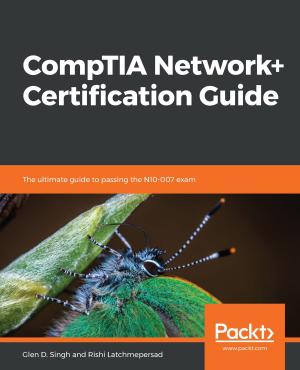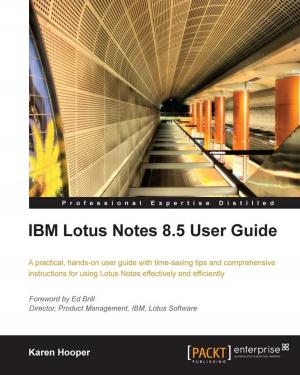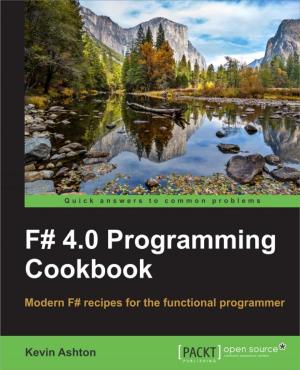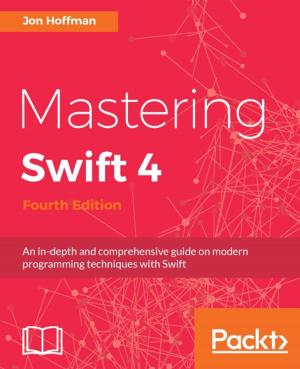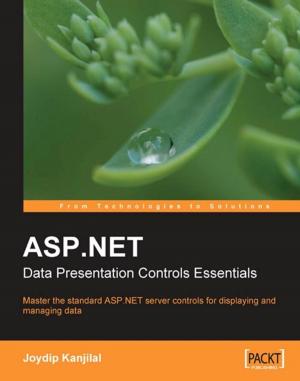Applied Deep Learning with Python
Use scikit-learn, TensorFlow, and Keras to create intelligent systems and machine learning solutions
Nonfiction, Computers, Advanced Computing, Artificial Intelligence, General Computing, Programming| Author: | Alex Galea, Luis Capelo | ISBN: | 9781789806991 |
| Publisher: | Packt Publishing | Publication: | August 31, 2018 |
| Imprint: | Packt Publishing | Language: | English |
| Author: | Alex Galea, Luis Capelo |
| ISBN: | 9781789806991 |
| Publisher: | Packt Publishing |
| Publication: | August 31, 2018 |
| Imprint: | Packt Publishing |
| Language: | English |
A hands-on guide to deep learning that’s filled with intuitive explanations and engaging practical examples
Key Features
- Designed to iteratively develop the skills of Python users who don’t have a data science background
- Covers the key foundational concepts you’ll need to know when building deep learning systems
- Full of step-by-step exercises and activities to help build the skills that you need for the real-world
Book Description
Taking an approach that uses the latest developments in the Python ecosystem, you’ll first be guided through the Jupyter ecosystem, key visualization libraries and powerful data sanitization techniques before we train our first predictive model. We’ll explore a variety of approaches to classification like support vector networks, random decision forests and k-nearest neighbours to build out your understanding before we move into more complex territory. It’s okay if these terms seem overwhelming; we’ll show you how to put them to work.
We’ll build upon our classification coverage by taking a quick look at ethical web scraping and interactive visualizations to help you professionally gather and present your analysis. It’s after this that we start building out our keystone deep learning application, one that aims to predict the future price of Bitcoin based on historical public data.
By guiding you through a trained neural network, we’ll explore common deep learning network architectures (convolutional, recurrent, generative adversarial) and branch out into deep reinforcement learning before we dive into model optimization and evaluation. We’ll do all of this whilst working on a production-ready web application that combines Tensorflow and Keras to produce a meaningful user-friendly result, leaving you with all the skills you need to tackle and develop your own real-world deep learning projects confidently and effectively.
What you will learn
- Discover how you can assemble and clean your very own datasets
- Develop a tailored machine learning classification strategy
- Build, train and enhance your own models to solve unique problems
- Work with production-ready frameworks like Tensorflow and Keras
- Explain how neural networks operate in clear and simple terms
- Understand how to deploy your predictions to the web
Who this book is for
If you're a Python programmer stepping into the world of data science, this is the ideal way to get started.
A hands-on guide to deep learning that’s filled with intuitive explanations and engaging practical examples
Key Features
- Designed to iteratively develop the skills of Python users who don’t have a data science background
- Covers the key foundational concepts you’ll need to know when building deep learning systems
- Full of step-by-step exercises and activities to help build the skills that you need for the real-world
Book Description
Taking an approach that uses the latest developments in the Python ecosystem, you’ll first be guided through the Jupyter ecosystem, key visualization libraries and powerful data sanitization techniques before we train our first predictive model. We’ll explore a variety of approaches to classification like support vector networks, random decision forests and k-nearest neighbours to build out your understanding before we move into more complex territory. It’s okay if these terms seem overwhelming; we’ll show you how to put them to work.
We’ll build upon our classification coverage by taking a quick look at ethical web scraping and interactive visualizations to help you professionally gather and present your analysis. It’s after this that we start building out our keystone deep learning application, one that aims to predict the future price of Bitcoin based on historical public data.
By guiding you through a trained neural network, we’ll explore common deep learning network architectures (convolutional, recurrent, generative adversarial) and branch out into deep reinforcement learning before we dive into model optimization and evaluation. We’ll do all of this whilst working on a production-ready web application that combines Tensorflow and Keras to produce a meaningful user-friendly result, leaving you with all the skills you need to tackle and develop your own real-world deep learning projects confidently and effectively.
What you will learn
- Discover how you can assemble and clean your very own datasets
- Develop a tailored machine learning classification strategy
- Build, train and enhance your own models to solve unique problems
- Work with production-ready frameworks like Tensorflow and Keras
- Explain how neural networks operate in clear and simple terms
- Understand how to deploy your predictions to the web
Who this book is for
If you're a Python programmer stepping into the world of data science, this is the ideal way to get started.




